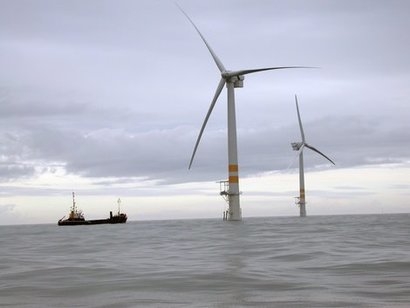
The policy brief, authored by John Dalton, President of Power Advisory LLC and head of the Network’s Grid & Transmission Working Group, was released ahead of the expected published results of New Jersey’s offshore wind transmission solicitation to connect 7.5 GW of generation to the grid. The brief builds upon the evident success of the state’s transmission solicitation, which spurred dozens of private sector bids, and offers a framework for multi-state transmission solicitations within the same regional transmission organization (RTO).
The US offshore wind industry is on the verge of tremendous growth thanks to strong state demand totalling 77.4 GW in long-term state targets, powerful new federal manufacturing and development incentives, and efforts to build trust and transparency in the permitting system. These market drivers already generated over $12 billion of investments in the US market and could lead to tens of thousands of new jobs. The Network formed its working group in 2019 as a realisation that a transmission system incapable of bringing to these projects to the grid without costly system upgrades remains a critical barrier to unlocking this growth.
“Fully harnessing offshore wind’s potential requires a nationwide effort to coordinate and build a grid for the future” said Sam Salustro, Vice President of Strategic Communications at the Business Network for Offshore Wind. “While we push for national collaboration, the US offshore wind market is rapidly developing and needs transmission solutions today to continue building momentum.”
The policy brief outlines five key principles to developing a multi-state transmission solicitation, from accessing potential environmental and economic benefits to developing cost allocation proposals. Key insights, especially learning from New Jersey’s State Agreement Approach, include the need for proactive engagement of an RTO, the need for a robust analysis of potential costs and benefits, and a well-defined policy objectives to guide any solicitation.
John Dalton, head of the Network’s Grid & Transmission Working Group, added that a well-designed offshore wind transmission development process will lead to significant cost-savings for ratepayers and long-term market certainty for investors.
“We are seeing this play out in New Jersey, but achieving greater savings requires moving beyond a single-state approach to capture greater benefits on a regional basis” said Mr Dalton. “This paper provides a model for stakeholders to consider.”
The Network’s Grid & Transmission Working Group previously laid out the need for coordinated transmission planning in its first two reports and argued federal government action would be instrumental in driving long-term and large-scale grid planning. All three reports are accessible online. In early November, the Network will host its Grid and Transmission Summit with a full day of facilitated discussion dedicated to advancing the conversation around offshore wind transmission.
For additional information:
Business Network for Offshore Wind
Proposal for Coordinated Transmission Development for Offshore Wind in Multi-State RTOs

